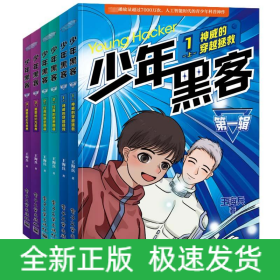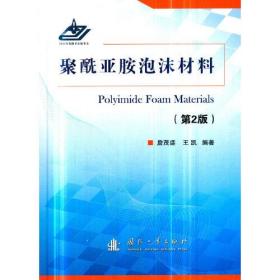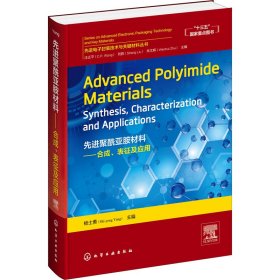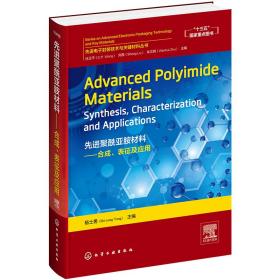
先进聚酰亚胺材料--合成表征及应用(英文版)(精)/先进电子封装技术与关键材料丛书
全新正版 极速发货
¥ 202.68 6.8折 ¥ 298 全新
库存3件
作者杨士勇(Shi-yong
出版社化学工业出版社
ISBN9787122334985
出版时间2020-12
装帧精装
开本16开
定价298元
货号1202170995
上书时间2024-06-10
- 最新上架
商品详情
- 品相描述:全新
- 商品描述
-
商品简介
先进聚酰亚胺材料,由于具有优异的耐热性、综合力学性能、电学性能和化学稳定性等,在航空、航天、微电子、平面显示、电气绝缘等高技术领域具有广泛的应用前景。
本书系统介绍了先进聚酰亚胺材料的合成、性能和应用。包括先进聚酰亚胺薄膜、先进聚酰亚胺纤维、碳纤维复合材料用树脂基体、超级工程塑料和泡沫材料、微电子用聚酰亚胺材料,还介绍了气体分离膜、质子交换膜、可溶性和低k 值聚酰亚胺材料。
本书可供化学工业、高分子材料、航空航天、微电子制造与封装、平面显示等领域的相关研究人员、工程师、研究生以及高年级的本科生参考使用。
作者简介
杨士勇,中国科学院化学研究所研究员、博士生导师、国家973项目首席科学家、1999年度国家杰出青年基金获得者、中国科学院“百人计划”资助获得者、中国科学院大学教授、享受国务院政府特殊津贴的专家。
1982年毕业于兰州大学化学系,1985年在中国科学院化学研究所获得硕士学位,1988年在南开大学获得博士学位。1988-1992年在中国科学院上海有机化学研究所任助理研究员,1992-1996年先后在TheUniversityofNewYorkatBuffalo和TheUniversityofChicago从事博士后研究。1996年回国,在中国科学院化学研究所任副研究员、研究员。
近年来主要致力于对于国家经济建设和国防安全具有重要推动和促进作用的先进高分子材料的基础和应用基础研究。在碳纤维复合材料用耐高温树脂基体、耐高温聚酰亚胺薄膜、耐高温粘结剂、耐高温工程塑料、微电子制造与封装材料等方向取得了多项令人注目的研究成绩。
目录
Preface ix
List of Contributors xi
About the Editor xii
Chapter 1 Advanced Polyimide Films 1
Shi-Yong Yang and Li-Li Yuan
1.1 Introduction 1
1.2 Chemistry of Polyimide Films 3
1.2.1 Thermal Imidization 3
1.2.2 Chemical Imidization 8
1.3 Thermal Curing of Polyimide Films 14
1.3.1 Thermal Imidization Process 14
1.3.2 Influence of Curing Temperatures on Film’s Properties 18
1.4 Structures and Properties of Polyimide Films 20
1.4.1 Advanced Polyimide Films 20
1.4.2 Low-CTE Polyimide Films 28
1.4.3 Transparent Polyimide Films 37
1.4.4 Atomic Oxygen-resistant Polyimide Films 47
1.5 Surface Modification of Polyimide Films 52
1.6 Applications of Polyimide Films 54
1.6.1 Electric Insulating Applications 54
1.6.2 Electronic and Optoelectronic Applications 56
1.6.3 Aerospace Applications 60
1.7 Summary 62
REFERENCES 62
Chapter 2 Advanced Polyimide Fibers 67
Qing-Hua Zhang, Jie Dong and De-Zhen Wu
2.1 Introduction 67
2.2 Synthesis of Spinning Resin Solutions 68
2.2.1 “Two-Step” Polymerization Method 68
2.2.2 “One-Step” Polymerization Method 70
2.3 Preparation of Polyimide Fibers 72
2.3.1 Wet-Spinning Method 72
2.3.2 Dry-Spinning Method 77
2.3.3 Other-Spinning Methods 81
2.4 Structure and Properties of Polyimide Fibers 82
2.4.1 Aggregation Structure of Polyimide Fibers 82
2.4.2 Chemical Structure-Property Relationship 84
2.4.3 Properties of Polyimide Fibers 87
2.5 Applications of Polyimide Fibers 89
2.5.1 Production of Polyimide Fibers 89
2.5.2 Application of Polyimide Fibers 89
2.6 Summary 91
REFERENCES 91
Chapter 3 Polyimide Matrices for Carbon Fiber Composites 94
Shi-Yong Yang and Mian Ji
3.1 Introduction 94
3.2 NA-endcapped Thermoset Matrix Resins 95
3.2.1 Chemistry 96
3.2.2 Structures and Properties 97
3.3 PE-endcapped Oligoimide Resins 107
3.3.1 Chemistry 107
3.3.2 Structures and Properties 108
3.4 Properties of Polyimide/Carbon Fiber Composites 122
3.4.1 Preparation of PMR-type Resin Prepregs 122
3.4.2 Fabrication of Carbon Fiber Composites 122
3.4.3 Properties of NA-Endcapped Polyimide Composites by Autoclave 123
3.4.4 Properties of PE-Endcapped Polyimide Composites by Autoclave 127
3.4.5 Properties of PE-Endcapped Polyimide Composites by RTM 130
3.5 Applications of Polyimide/Carbon Fiber Composites 132
3.6 Summary 134
Contents
REFERENCES 134
Chapter 4 Super Engineering Plastics and Foams 137
Shi-Yong Yang, Hai-Xia Yang and Ai-Jun Hu
4.1 Introduction 137
4.2 Compression-Molded Polyimide Materials 138
4.3 Injection and Extrusion Processed Polyimide Materials 139
4.4 Structures and Melt Processabilities of Aromatic Polyimide Resins 145
4.4.1 Polyimide Backbone Structures 145
4.4.2 Controlled Molecular Weights 147
4.5 Meltable Thermoplastic Polyimide Composites 150
4.6 Reactive End-Capped Meltable Polyimide Resins 153
4.6.1 NA-end-capped Meltable Polyimide Resins 154
4.6.2 PE-end-capped Meltable Polyimide Resins 159
4.7 Heat-Resistant Polyimide Foams 162
4.7.1 Introduction 162
4.7.2 Opened-Cell Soft Polyimide Foams 163
4.7.3 Closed-Cell Rigid Polyimide Foams 169
4.8 Thermally Stable Flexible Polyimide Aerogels 178
4.9 Summary 185
REFERENCES 185
Chapter 5 Polyimides for Electronic Applications 189
Qing-Hua Lu and Feng Zheng
5.1 Introduction 189
5.2 Polyimide Materials for Microelectronics 190
5.2.1 Combined Property Requirements 190
5.2.2 Typical Applications 192
5.2.3 Structures and Properties of Polyimide Materials for Microelectronics 195
5.3 Polyimide Materials for Optoelectric Planar Displays 206
5.3.1 Liquid Crystal Alignment Layers 206
5.3.2 Mechanical Rubbing Alignment Polyimides 207
5.3.3 Photoinduced Alignment PIs 208
5.3.4 The Microgroove Polyimide Surfaces 216
5.3.5 Langmuir–Blodgett Polyimide Films 217
5.4 Polyimide Materials for Optoelectronic Flexible Displays 217
5.4.1 Combined Property Requirements 217
5.4.2 Polyimides for Flexible Electronic Substrates 221
5.5 Polyimide Materials for Electronic Memories 226
5.5.1 Introduction 226
5.5.2 Polyimides for Resistive-type Memory Devices 229
5.5.3 Polyimides for Transistor-type Memory Devices 238
5.6 Summary 241
REFERENCES 242
Chapter 6 Polyimide Gas Separation Membranes 253
Xiao-Hua Ma and Shi-Yong Yang
6.1 Introduction 253
6.2 Mechanisms of Gas Separation and Testing Methods 255
6.2.1 Gas Transport Mechanism 255
6.2.2 Apparatus for Testing Gas Transport Properties 259
6.3 Structures and Properties of Polyimide Membranes 260
6.3.1 Isomer Structure Effects From Diamines 260
6.3.2 Substitution and Geometric Effects From Diamines 261
6.3.3 Chemical Structure Effects of Dianhydrides 270
6.4 Intrinsically Microporous Polyimide Membranes 276
6.5 Hydroxyl-functionalized Polyimide and Its Derived Polybenzoxazole Membranes 287
6.5.1 Hydroxyl-functionalized Polyimide Membranes 287
6.5.2 Thermally Rearranged Polybenzoxazole (TR-PBO) Membranes 294
6.5.3 Applications of TR-PBO Contents Membranes 301
6.6 Polyimide-Derived Carbon Molecular Sieve Membranes 301
6.6.1 Formation of CMSMs 301
6.6.2 Conversion From Polyimide to CMSMs 302
6.6.3 Structures and Properties of CMSMs 304
6.7 In Summary 314
REFERENCES 314
Chapter 7 Polyimide Proton Exchange Membranes 319
Jian-Hua Fang
7.1 Introduction 319
7.2 Monomer Synthesis 320
7.2.1 Synthesis of Sulfonated Diamines 320
7.2.2 Synthesis of Six-membered Ring Dianhydrides 329
7.3 Polyimide Preparations 330
7.3.1 Preparation From Sulfonated Diamines 330
7.3.2 Preparation From Sulfonated Dianhydrides 332
7.3.3 Synthesis via Postsulfonation 333
7.3.4 Block Copolymerization 334
7.4 Ion Exchange Membrane Properties 338
7.4.1 Solubility 338
7.4.2 Thermal Stability 340
7.4.3 Water Uptake and Swelling Ratios 340
7.4.4 Proton Conductivity 342
7.4.5 Water Resistance 344
7.4.6 Radical Oxidative Stability 356
7.4.7 Methanol Permeability 362
7.5 Fuel Cell Performance 364
7.6 Summary 371
REFERENCES 371
Chapter 8 Soluble and Low-k Polyimide Materials 376
Yi Zhang and Wei Huang
8.1 Introduction 376
8.2 Structures and Properties of Soluble Aromatic Polyimides 377
8.2.1 Soluble Polyimides With Flexible Backbones 377
8.2.2 Soluble Polyimides With Asymmetric Structures 379
8.2.3 Soluble Polyimides With Alicyclic Structures 380
8.2.4 Soluble Polyimides With Side Groups 382
8.3 Applications of Soluble Aromatic PIs 388
8.3.1 Second-order Nonlinear Optical (NLO) Materials 388
8.3.2 Memory Device Materials 392
8.3.3 Compensator Materials for Liquid Crystal Displays 397
8.3.4 Gas Separation Materials 398
8.3.5 Other Applications 398
8.4 Low-k Polyimide Materials 399
8.4.1 Introduction 399
8.4.2 Impact Factors on Dielectric Properties 400
8.4.3 Structures and Dielectric Properties of Polyimides 403
8.4.4 Low-k Polyimides With Porous Structures 404
8.4.5 Organic-Inorganic Hybrid Polyimide Materials 421
8.4.6 Intrinsic Low-k Polyimide Materials 429
8.4.7 Summary 442
REFERENCES 443
Appendix Unit of Measurement Conversion Table 453
内容摘要
先进聚酰亚胺材料,由于具有优异的耐热性、综合力学性能、电学性能和化学稳定性等,在航空、航天、微电子、平面显示、电气绝缘等高技术领域具有广泛的应用前景。
本书系统介绍了先进聚酰亚胺材料的合成、性能和应用。包括先进聚酰亚胺薄膜、先进聚酰亚胺纤维、碳纤维复合材料用树脂基体、超级工程塑料和泡沫材料、微电子用聚酰亚胺材料,还介绍了气体分离膜、质子交换膜、可溶性和低k值聚酰亚胺材料。
本书可供化学工业、高分子材料、航空航天、微电子制造与封装、平面显示等领域的相关研究人员、工程师、研究生以及高年级的本科生参考使用。
主编推荐
1.书稿由国家973聚酰亚胺材料首席科学家杨士勇教授主编,全部由国内有关领域知名专家执笔,内容优选、原创。
2.本书汇总了我国聚酰亚胺973课题研究的原创成果,反映了聚酰亚胺这一优选材料在微电子领域、航空航天等领域的应用成果,在微电子领域,尤其是电子封装领域具有较高的使用价值。
相关推荐
— 没有更多了 —

















以下为对购买帮助不大的评价